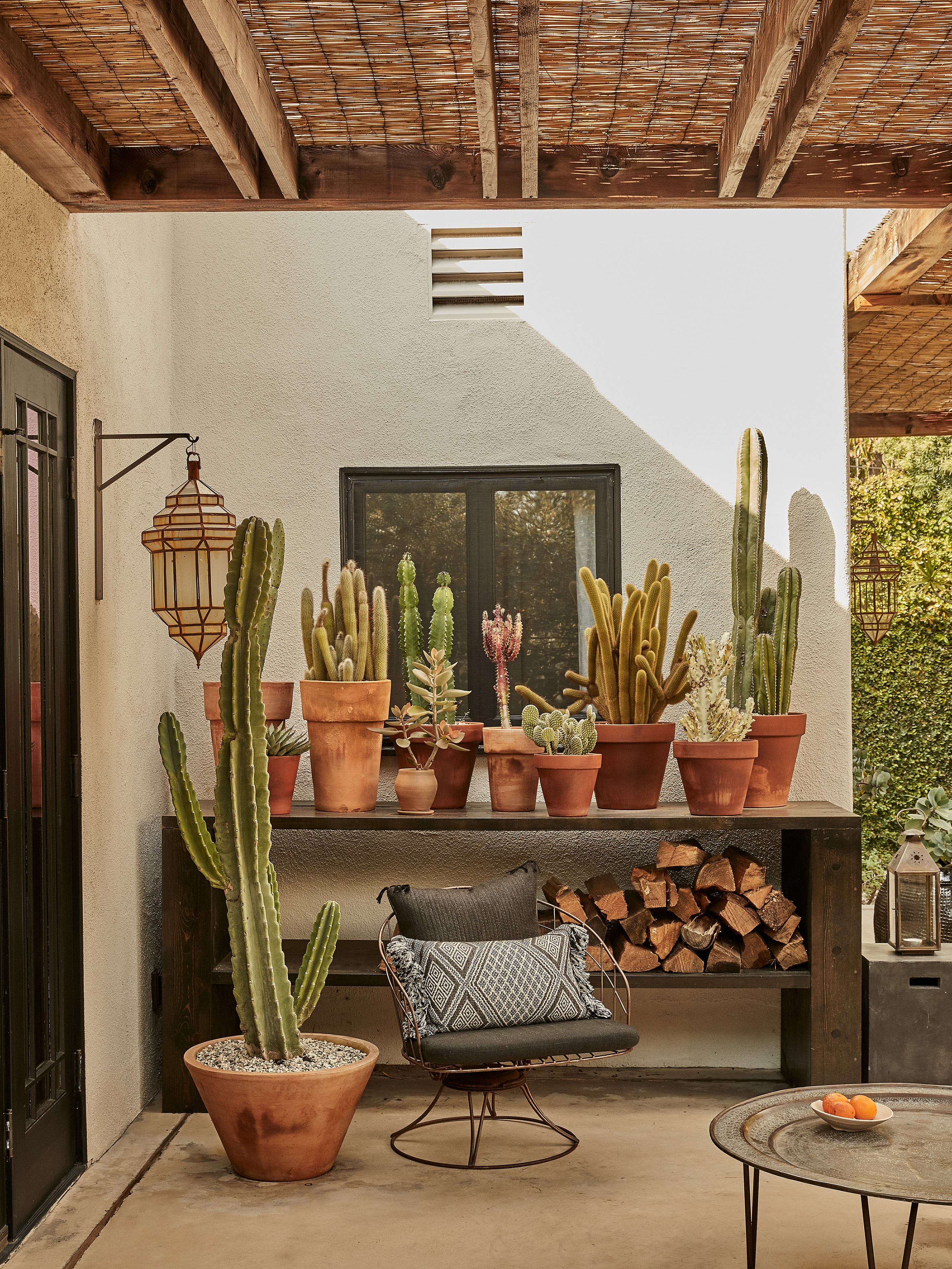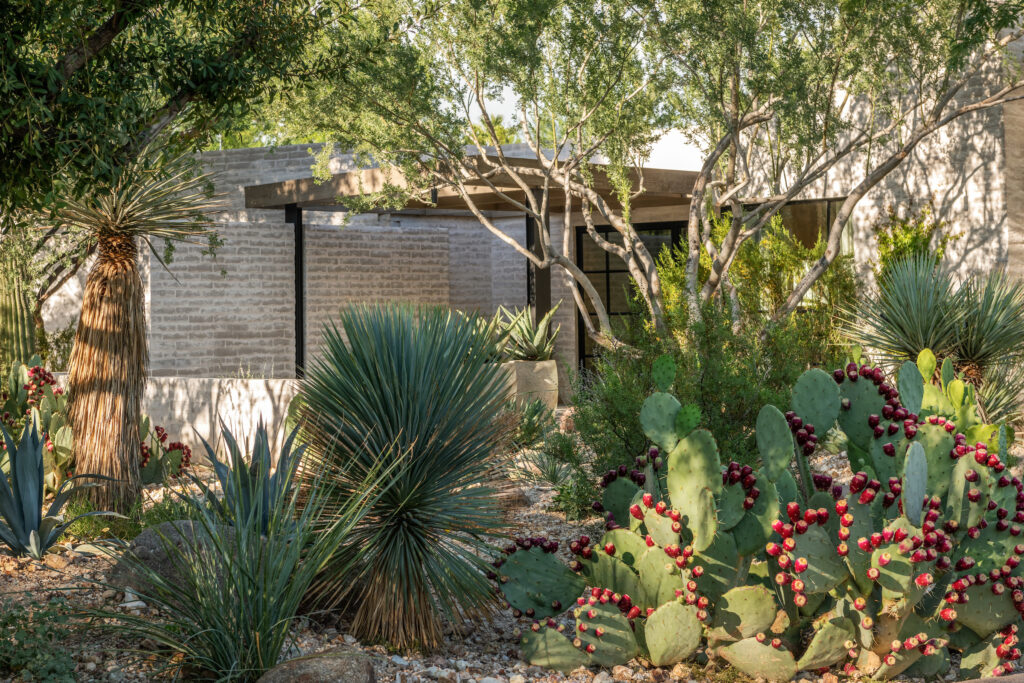
Considering a Low-Water Cactus Garden? This Is What You Need to Know First
Sure, these pointy succulents are low-maintenance, but even cactuses have needs, and you can find them all right here.

This article is part of our new 8-week, limited edition newsletter series, The Low-Water Gardening Guide, where we’ll walk you through what it takes to create a sustainable garden, from swapping in the appropriate plants to new irrigation methods to the tools you’ll need and more. Sign up here to get each installment straight to your inbox.
Let’s get straight to the point: Cactus gardens can be composed and sculptural, or Dr. Seuss-ian and wild, but either way, they’re awesome. That said, there’s a lot more to creating a cactus garden than sticking some pricklers into the sand and calling it a day. It turns out, cactuses enjoy a wide range of conditions and have different needs. “Some cactuses breathe rarified air in the mountains of Patagonia, thriving where nothing else can survive,” says Christian Cummings of the Cactus Store in Los Angeles. “Some live in tropical jungles and in swamps snaking their way through trees. Some prefer life in the world’s driest desert, the North Chilean coastal Atacama where they receive almost no rain, while others still reach up to 70 feet and can weigh in at roughly 17,000 gazillion tons.”
Intimidated? Don’t be—three top-tier cactus experts are here to walk us through how to create a cactus garden of your very own.

Michael Duerinckx Photography; Courtesy of The Green Room Collaborative
Choose the Right Plants
The first step is to make sure you have the right conditions. “Full sun exposure is required for a successful cactus garden, and depending on the type of species you would like to grow and what planting zone you live in, shade from the western sun can be highly desirable, especially during summer months in dry climates, for example,” says landscape architect Matt Thomas of Arizona’s The Green Room Collaborative.
Planting native species is one way to ensure a higher rate of success, or you can research what plants will do best in your area. To do this, ask a knowledgeable employee at the garden store or look up your favorite cactuses on Google. “You want to find out where the cactus naturally occurs, and what kind of rain cycles they have in that part of the world,” says Los Angeles landscape designer Adam Sirak. “Then try to replicate its home conditions as much as possible in your own garden.”
Also, be mindful of what size the cactus you have your eye on will be at maturity, he adds. “Some agaves can get huge and it’s heartbreaking to see them with their blades cut off or, worse, getting ripped out because they’ve gotten too big for the space.”
Another way to narrow down your choices is to think about what you’ll use your garden for. Ask yourself if you want your cactus garden to provide habitat, be used as a lawn replacement, be a specimen garden, or to create a composition to juxtapose with great architecture. Another good thing to consider is whether there are children, elderly relatives, or pets to think about—cactus thorns and needles can be unforgiving and pose a health risk.
Choose the Right Soil
There’s much debate about which is the best soil to use, according to Thomas, so try to use soil that’s similar in structure and composition to the native soil your cactuses grow in naturally. In general, he says “a well-drained, sandy-loam soil with low organic content is typical for arid soils and would be suitable for a cactus garden.”

Daniel Collopy
Water Wisely
People often either overwater or underwater their cactuses. When over-watering, “They think they’re being generous to the plant but they’re really just making it sick,” says Sirak.
Cummings, on the other hand, says that doesn’t mean you don’t water cactuses at all. “They will tolerate drought conditions, but they don’t like it,” he says. “During the growing season, soak your cactus at least once a week at night, allowing the soil to dry out in between. Death by thirst is the number one cause of cacticide. Don’t be a murderer!”
To split the difference, I asked Thomas what to do. “Create a water schedule,” he said. “A cactus’ water demands change throughout the year as more or less water is available in the atmosphere of their particular region, so use irrigation timers you can adjust accordingly.” He also recommends smart irrigation timers that can help make seasonal updates easier to manage. Soil sensors can detect water in your garden soil, which can automatically adjust your irrigation controller for you.
One great tip: Try planting your cactus garden in hydro-zones, where species of cactus that share similar water requirements are clustered together.

Michael Duerinckx Photography; Courtesy of The Green Room Collaborative
Design Your Cactus Garden
This, of course, is where it gets exciting. Placement and color are what make cactus gardens fun—just ask John Mayer. “An artful arrangement begins with a focused approach on textures, mature growth habits, and colors,” says Thomas. “You can focus on the slight variations between species, while forms and growth habits are a great way to ensure a pleasing visual composition that has a sense of depth, richness, and character.”
You can also go the minimal route, says Sirak, by using just two to three specimens and a “nice boulder.” This is why cactus gardens can work especially well in small spaces, he adds.

Thomas J. Story
Other things to pay attention to: “You want a balance of vertical and mounding shapes, and try to keep the color palette fairly strict,” Sirak says. He recommends giving each plant proper breathing room to show off its silhouette, and to think about creating interesting juxtapositions between two or more plants.
Both Thomas and Sirak have a favorite cactus that appear in many of their garden designs. Sirak loves Agave shawyii, a California native that stays small and colonizes when established. “I try to add them to most of my native gardens for a pop of texture,” he says.
Thomas loves the Aloe dichotoma tree, because of its height, multi-headed form, and showy trunk. “It’s a great anchor to any dry garden.” he says. He also uses barrel cactuses in fun groupings of varies sizes and species. “This creates a rumbling effect when in combinations with boulders,” he adds. He also uses saguaro cactuses as much as possible because of their impressive height. Cholla species, meanwhile, can be used for visual and physical screening.
All that’s left now is to kick back and enjoy. “Cactuses are extremely low-water and almost maintenance-free,” Sirak says, adding that he sees cactus gardens like sculptures due to their interesting shapes.
Cactus gardens are unique, too, so you can take pride in your work. “And using less water in a garden that’s still visually stunning adds real value to any garden or landscape design,” Thomas says.
Read the Current Issue Here!
Get one year of Sunset—and all kinds of bonuses—for just $29.95. Subscribe now!
